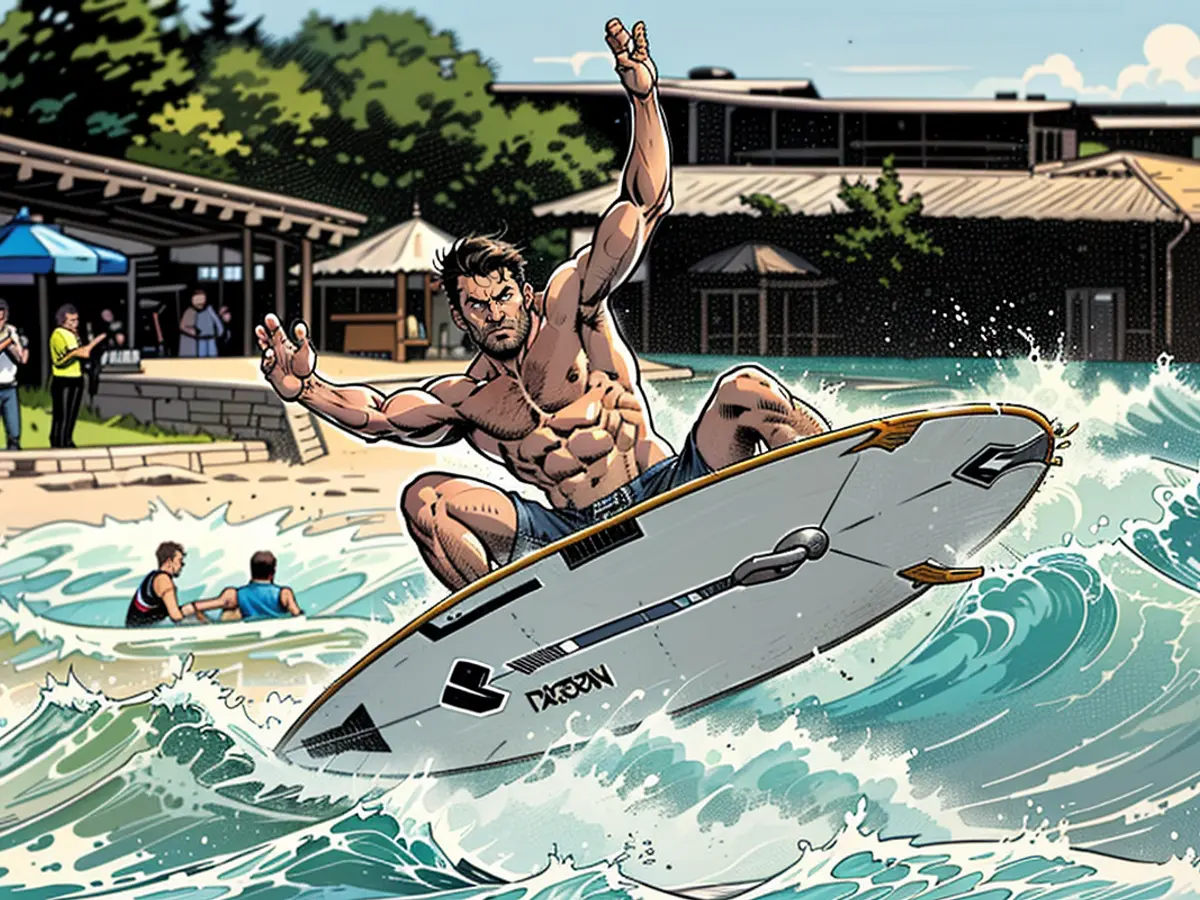German surfing enthusiasts hail a "revolutionary shift" with a simple button press.
Germany Introduces Indoor Waves for Surfing Championships: For the first time ever, Germany's national surfing championships won't be held overseas but in Hallbergmoos, near Munich. Professional German surfers are elated, hoping for a major breakthrough. However, something significant is still lacking.
If you think of Hallbergmoos, sun, sea, and surf might not be the first things that come to mind. But surprisingly, that's where the German surfing championships are set to take place. For the first time, the country's best surfers aren't vying for the title in Seignosse, Cap de l'Homy, or other scenic Atlantic locations. Instead, they'll be battling it out in this Bavarian municipality. Advanced technology makes this possible, and the event is more predictable than ever.
"This surf park is a game-changer," says Camilla Kemp, Germany's first surfer to compete in the Olympics this summer. "Its amazing to be able to surf here and inspire the next generation of surfers."
Leon Glatzer, who represented Germany at surfing's Olympic debut in Tokyo, shares the same sentiment. "Finally, we have a place in Germany where we can train under ideal conditions and develop the sport - everything we need is right on our doorstep."
Week-Worthy Tricks Instead of Yearly Gridlock
Typically, surfing competitions take place in the sea. However, German coastlines on the North and Baltic Seas rarely offer consistent conditions for surfing. Therefore, the German Surfing Association hosts its annual national championships in France, where the waves are better. However, they're not always consistent. Sometimes, champions are crowned under conditions that don't allow them to showcase their full potential. Now, Hallbergmoos offers an artificial wave solution.
Chris Boehm-Tettelbach, CEO of o2 Surftown Muc, describes it as a "piano that you can play." The park, officially known as that, has 34 individually adjustable air chambers that generate waves up to 2.2 meters high. These waves, powered by green energy, flow through the pool, providing a surfing experience akin to that in the sea. The facility opened in August, and hobbyists can also book surf sessions here.
Glatzer believes the surf park can help German surfers close the gap internationally. He and other top surfers who resided near the sea can now live in Germany and train at the Olympic training center. "I could learn a trick in a week that I would have taken a year to master at sea," Glatzer tells the German Press Agency. Instead of relying on nature's whims, consistent waves are now produced in series.
Opportunities for Young Surfers?
The facility could also benefit young surfers. Glatzer points out, "I've been approached by children and young people on Instagram, saying they want to become professional surfers, but they can't because they can only surf during vacations and have no other training opportunities." With the surf park, they now have an unprecedented opportunity to make their dream a reality.
However, surf sessions for hobbyist junior athletes aren't free. Surf lessons start at 69 euros, and a session in a wave pool with advanced surfing waves costs 89 euros. While there are benefits like predictable conditions and convenience for Munich-area surfers, something is missing: the natural experience and the element of surprise. "Sometimes you wait for hours in the ocean, and suddenly the perfect wave comes. It's like an early Christmas present," says Glatzer. "That feeling is missing in a wave pool."
International competitions have traditionally taken place in the sea. However, that may change with the growing prevalence of synthetic waves worldwide. World-class events in surf parks could become a reality sooner than we think. Glatzer, however, doesn't believe wave pools will completely replace ocean competitions. "I think there will be a healthy mix of wave pool events and ocean events in the future," he says. Future events in Hallbergmoos are also a possibility.
Despite the lack of sun, sea, and surf associations with Hallbergmoos initially, it has become a significant location for German surfers due to the introduction of an indoor waves facility. This Surf Park, a game-changer for German surfers like Camilla Kemp and Leon Glatzer, offers ideal training conditions.
With consistent waves produced in series, surfers like Glatzer can now learn advanced tricks in a shorter time than they would have in the sea. This innovation greatly benefits young surfers too, providing them with year-round training opportunities, helping them turn their surfing dreams into a reality.








